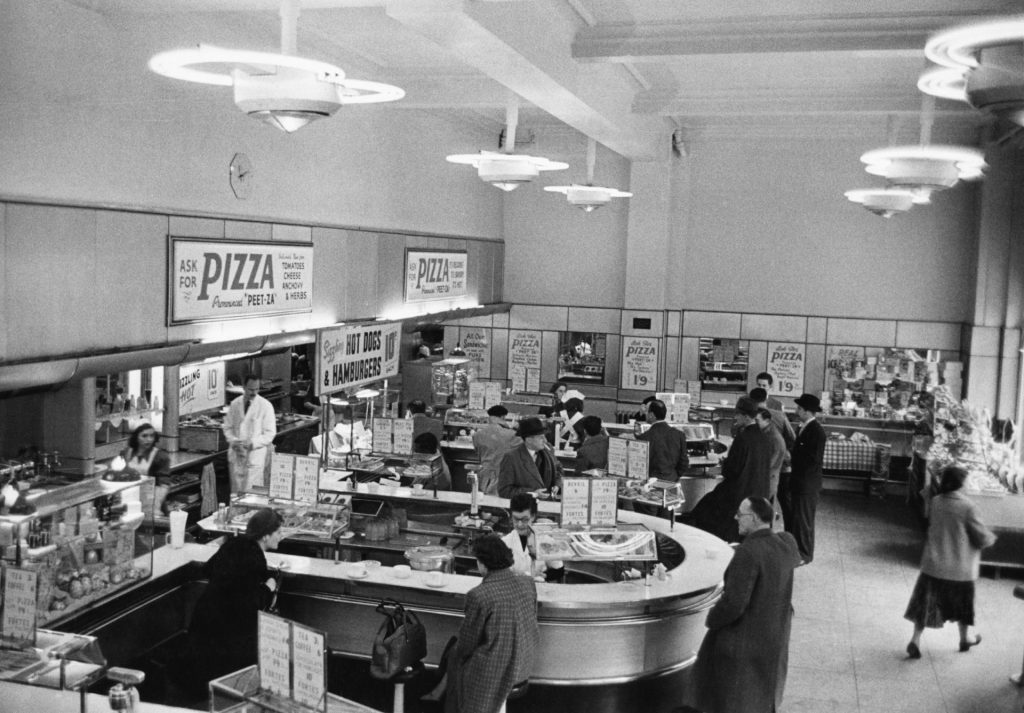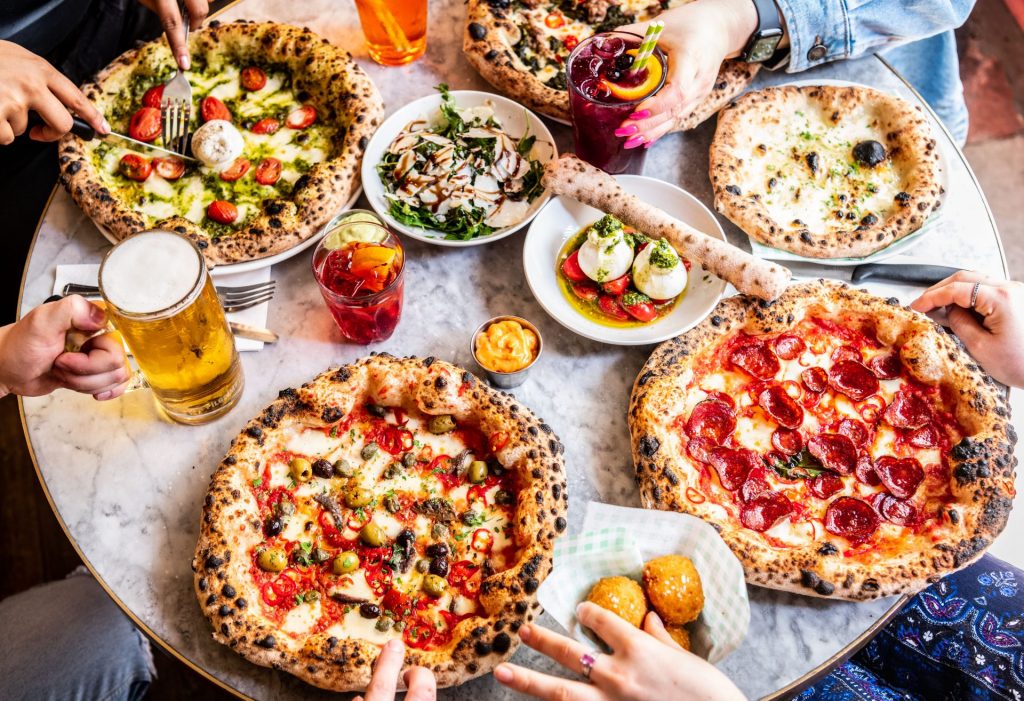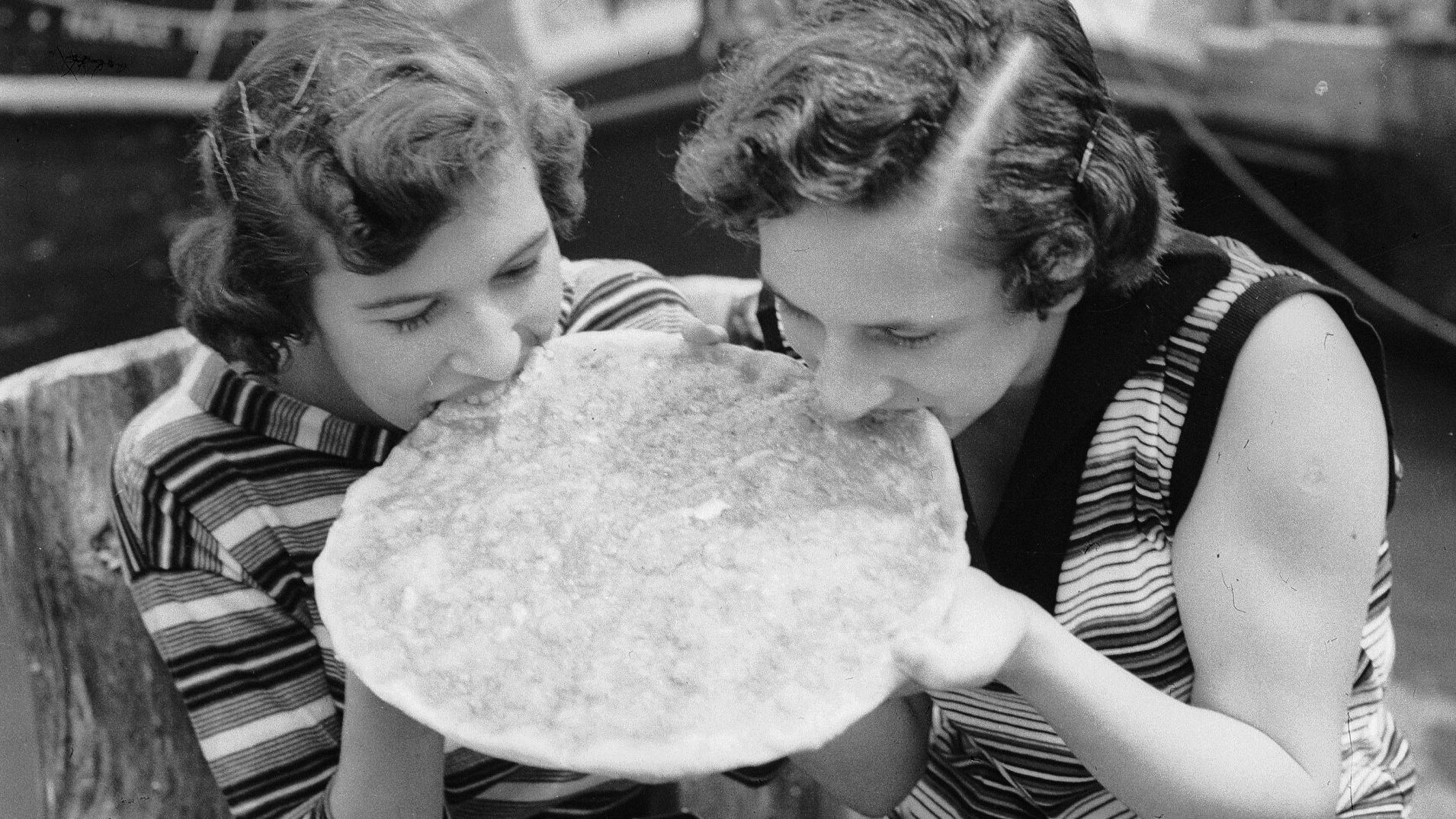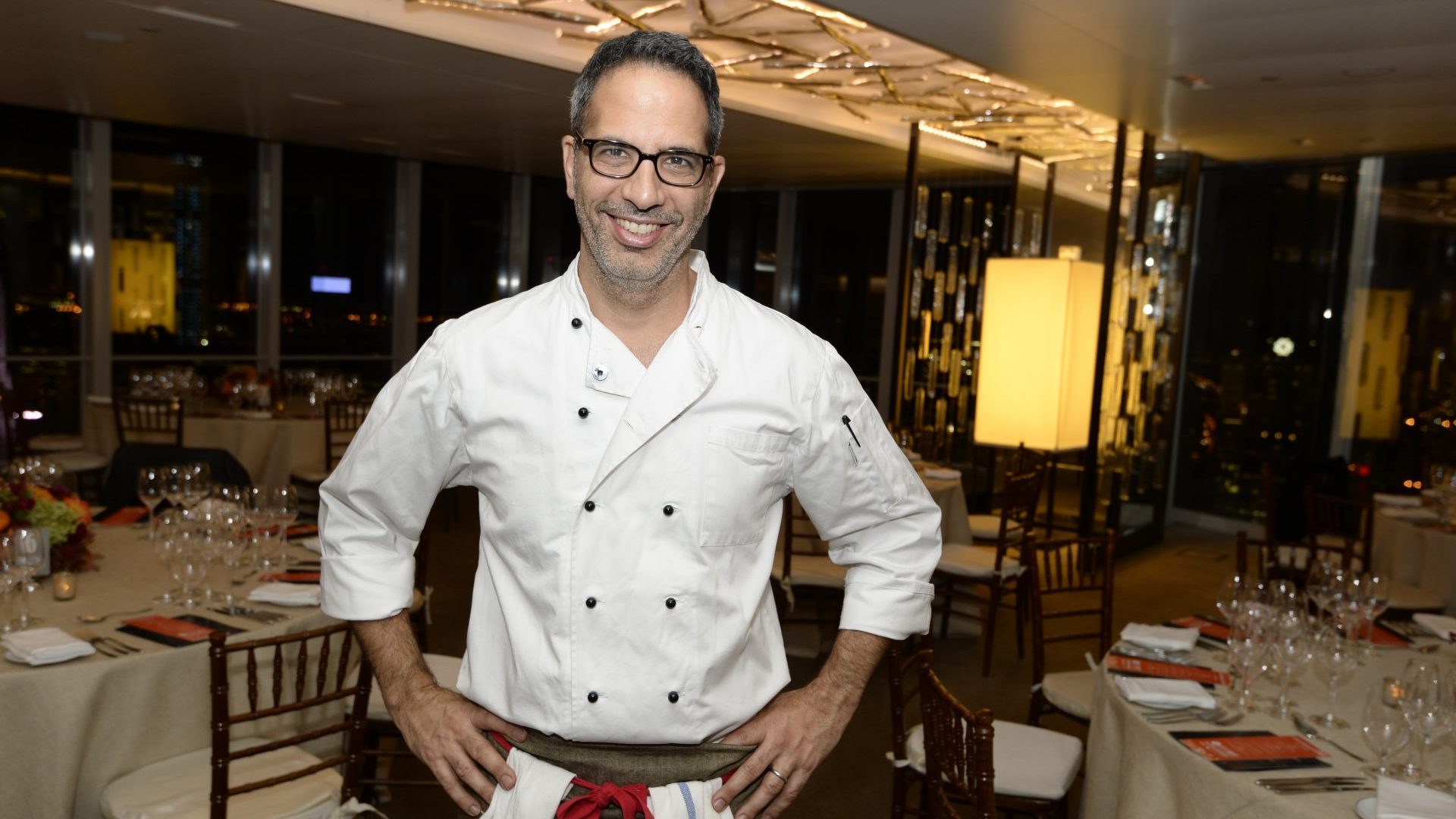First, there is the dough, fashioned with prime Neapolitan technique. Then comes buffalo mozzarella from a farm in the Campanian hills. After baking, at 250C and for mere minutes, a sauce made from an ancient variety of tomatoes grown near the town of Caiazzo, an hour’s drive from Naples, is applied in bright rectangles of geometric design. Finally, rich olive oil, sourced from a Sicilian family that dates back to a time before pizza was invented, comes into play. It is imbued with fresh basil and dotted artistically across the “world’s best pizza”.
This is Franco Pepe’s famous margherita sbagliata. He is an Italian pizzaiolo, suitably leftfield, and his creation, which translates as “the mistaken margherita”, has twice been named best pizza in the world. It is now available in Britain for the first time – at Fatto a Mano, a group with sites in London and Brighton.
The mistaken margherita’s arrival on these shores marks another stage in what is becoming a national obsession. Today, pizza is as integral to mainstream food culture here as chicken tikka masala, fish and chips, and beef chow mein. And we are collectively seeking out the best.
“Pizza’s been here for decades but people wanted more,” says Tom Vincent, whose pizza joint Vincenzo’s in Bushey, Hertfordshire, is an Instagram sensation. “In less than two decades we’ve gone from frozen pizzas in the supermarket to the real deal. We’re starting to become a serious country when it comes to the dish.
“Now we’re like the USA, taking note of who’s selling what, the brands on the scene, heritage, what people are buying and from where. Pizza isn’t just food, it’s a personality and inspires loyalty. Everyone has their favourite. And it’s so great that all this culture is happening in the UK now.”
What might be called “mainstream pizza” has long been in the British bloodstream. A recent poll of the country’s favourite high-street food brands saw three pizza chains – Domino’s, Pizza Hut and Pizza Express – in the top 10. At the summit of the list was Britain’s biggest bakery chain, Greggs, which last year opened a new pizza-making plant in north London with the capacity to produce around 1.5 million slices per week.
Greggs’ pizzas are much like those served in school canteens pre-Jamie Oliver. Thick, doughy oblongs covered in sweet tomato sauce, cheddar cheese and occasionally small, convex slices of salty pepperoni that resemble greasy little sausage buttons. They have their place, and are fine for it.
So too are the sweet deliveries of Domino’s, which launched its British business in Luton in 1985 and now has over 1,200 stores across the UK and Ireland, making more than 106 million pizzas a year. It is the big player in a UK pizza takeaway and delivery market worth £3.4bn a year.
At its core, pizza is more refined, though has been much debauched. After evolving in Naples, where market vendors sold topped flatbreads decades before chef Raffaele Esposito created the margherita in 1889, pizza is approaching its centenary in the UK. An Italian restaurant called Olivelli in London’s Bloomsbury was, so the story goes, the pioneer in the early 1930s.

But despite the capital’s burgeoning Italian population – about 11,000 at the time – pizza was still a novelty until the mid-1950s. Then, on the back of a pizza boom in the US after WWII servicemen returned from Italy with a taste for the stuff, frozen varieties began to pop-up in the country’s first supermarkets.
In 1965, Peter Boizot opened Pizza Express in Soho, with an oven shipped over from Naples. Originally selling 10p slices served on greaseproof paper, it established itself around the capital and the country over the next few years, hailed for the cool of its Enzo Apicella-designed restaurants and for the Roman, tonda-style pies it still sells: thin, crisp, and made from a relatively dry dough that has a short maturation time.
Others tried to stake their claim on the British high street. Pizzaland (established 1970, with backing from the group that then owned the Daily Mail) had its moment, as did the Deep Pan Pizza Co. In those pre-delivery days, Pizza Hut opened its first UK franchise in 1973 and introduced deep pan pizza to Britain eight years later.
Still, back then, when it came to high-quality pies, you had to rely on Pizza Express, or a scattered number of local heroes with knowledge from the old country – Pizzeria Italia, run by Milan-born Evandro Barbieri in Manchester, for example, is fondly remembered.
In the last few years, Britain’s understanding of pizza has become more acute and refined. At home, households stock up on tins of San Marzano tomatoes and fior di latte mozzarella, while home-friendly pizza ovens like Gozney and Ooni have been muscling in on barbecue territory.
On the restaurant scene, there are still holes when it comes to Sicilian sfincione – thick, bouncy and focaccia-like in quality – and the instant and unleavened, cracker-like pizza served in bars around St Louis and the wider Midwest, but otherwise the landscape is eclectic and rambunctious.
There are proper Chicago-style deep dish pizzas; Detroit-inspired slabs with crisp, parmesan-crinkled edges and where deep tomato sauce tops the cheese; New York variations with rigidity in the base, tang to the dough and a chewy crust; lately, New Haven types and endless, endless shops that specialise in the floppy pizzas of Naples. I even had a decent one from a van in Basingstoke the other day.
Neapolitan pizza was the catalyst and Franco Manca lit the fuse. In 2008, what has become a national chain – there are now around 70 sites and more to come – started as a single shop in Brixton, south London, and it didn’t take long for queues to form. Here was something new: floppy, wet, chewy numbers with a gratifying pull of cheese in every bite and, in the blistered, leopard-spotted crust, a filling yet easy-to-digest finale. The tomato sauce was made with quality tomatoes and the ingredients – whether fior di latte mozzarella, evo oil or salumi – sourced from regions around Italy such as Campania and Sardinia. Sourdough, 00 flour and 24-hour fermentation were methods and buzzwords that were new and enchanting to almost everyone.
More than 15 years on and there are classic Neapolitan pizzas from Cornish villages to industrial towns in the north. In Manchester, Rudy’s and Nell’s; in Edinburgh, Razzo, Pizza Posto; Bristol has Bertha’s, Flour & Ash and more; to list London’s candidates would take up too many words. I’ll mention 50 Kalo, Santa Maria, Bravi Regazzi and 081, and leave it there.
And you cannot chart the British boom without Pizza Pilgrims, a London-born group expanding across the UK and which now employs almost 500 members of staff. Co-founder Thom Elliot believes the country is taking the best of what the world has dreamed up and transposing it here.
“Pizza education in the UK has been on speed,” Elliot says. “You look at New York and see how well established it is, see the variations and the pizza culture as a whole – it’s so important to the city – and wonder why the same didn’t happen here. Italian immigration to the east coast of the US was massive, but Britain had it too.
“I love the community side to pizza and how styles define places. Chicago pizza is worlds away from New Haven, and it changes even if you move from one town to the next. It’s like recipes in Italy and there is still militancy in what is acceptable in recipes.”
Elliot says pizza is nothing if not revered. To so many it is practically a cult. One of those foods that sparks outrage, adoration, contention.
“Four of our Italian chefs handed in their notice when we created our ‘carbonara pizza’,” he says. “We had to do a staff referendum. It won in favour of selling the dish, 51% to 49%. Now it’s one of our bestsellers. And we have Italians tell us, albeit quietly, that they love it. As well as a few who vowed never to return.
“And then British customers complained when we served pizza topped with fries and hot dogs – the thing is, that’s a classic in Naples. It’s about respect but also having fun. We would never mess with a margherita, but we serve lasagne pizza sometimes too. Variety is the spice of life. The demand is plateauing a little now as we see diversity and evolution in Britain. But it’s not going anywhere and the UK audience knows pizza now.”

Also booming is Yard Sale, which is probably closest to New York in style but doesn’t conform – it looks almost like Domino’s but is vastly superior in every way. Across London are numerous branches, and the business stays relevant with regular collaborations with the likes of rapper Big Zuu, hit Punjabi restaurant Tayyabs, and Chuku’s, the Nigerian tapas spot in Tottenham.
And then there is Carl McCluskey’s CrispW6, visited by royalty and fashionistas, and which is racking up millions of views on social media. Its rise was sparked by a favourable mention of its New York-style pies from Dave Portnoy, the US blogger whose single-bite video reviews of pizza joints across America have made him a multi-millionaire. Now queues form outside the pub every day; Harry Kane swings by when in town.
“During the pandemic, we thought we were finished. We started out with six cases of Moretti and a lucky credit card. There were no beer lines on. Now we can’t make pizza fast enough and it’s amazing,” says McCluskey, who operates out of The Chancellors, his family pub in Hammersmith, which he bought from his grandmother little over two years ago.
McCluskey, a former semi-professional footballer, says Britain’s pizza obsession is escalating and transforming every year. “I think social media has helped. We’ve all seen more on social media, watched the Pizza Show on VICE, and looked at what New York has going for it. Pizza is one of the cheapest things you can buy. If you do it well, people will come. There’s space for everyone. This could only be the beginning, really.” A second CrispW6 site has been charted, though isn’t yet finalised.
What’s next in the UK’s love affair with pizza? There are more specific types to explore in the US. From Italy, the likes of al taglio (rectangular, baked in trays and sold by the slice; arguably Jamie Oliver gets closest to this here with his airport offerings); al padellino (deep dish, taken on and sculpted rapturously by Chicago and surrounds, and – sort of – found at Japes in Soho, London); and al palla (oval, stretched-out flatbreads, made with a high-hydration, long-rising dough; available at Eataly, the Italian food market by Liverpool St station and few independents in major cities).
But the biggest buzz is around New Haven-style pizza. Originating in the 1920s and sold famously by pizzerias such as Sally’s and Frank Pepe, it is commonly made “plain”, with a thin but charred, chewy crust, and with oregano, tomato sauce, and a little pecorino romano. Mozzarella is considered a topping. As such, New Haven is a little drier than NYC pizzas, and usually only sold by the box rather than the slice. But it is still directly descended from Naples and is baked at a high heat (above 340C, where possible) in a coal-fired oven.
Software salesman Max Lewis might be the first to bring a dedicated New Haven pizzeria to the UK. His shop, Lenny’s, is to open in south-west London this summer, and will be, he says, “true to form”, with old school menu options such as tomato (just sauce and pecorino), potato and rosemary, and clam pie, which calls for plentiful garlic and mozzarella.
Lewis tells me: “I love the history of pizza, of the movement of people, and I’m trying to replicate traditions. We’ve got the Italian classics nailed and so everyone’s looking to America now. I thought New Haven was the way to go.
“The pizzas are thinner, there’s less crust, the toppings cover more of the pie, and they’re slower baked with a slightly heavier dough, a very complex gluten structure, so they’re a little denser. I love them. And I think the UK is ready.”
Few, if any, would argue. Pizza might have taken its time, but now it is everywhere, dough flying, tomato sauce cooking, cheese bubbling intensely. To be predictable, cheesy even: everyone wants a slice of the action.




